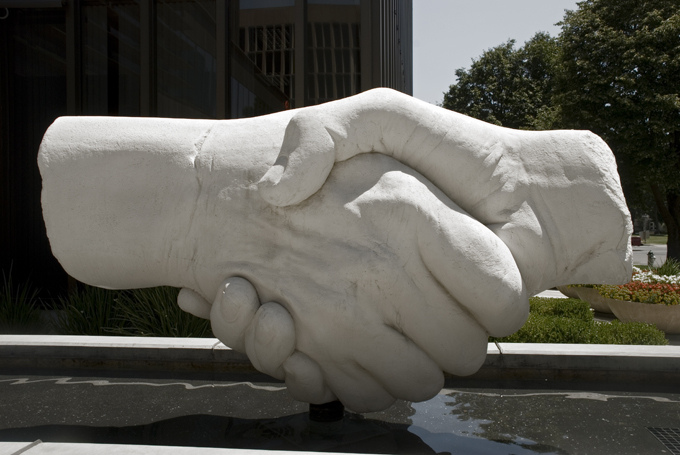Communities of opportunity are areas in which residents have everyday resources, such as good schools, transportation options, and retailers, near their homes. These neighborhoods have engaging civic life and accessible healthy food options, and are safe places to live. Communities of opportunity are desirable places to live because they fill the needs of all people. Residents take pride in their neighborhoods and the communities become strong and vibrant.
This type of community does not happen by chance. A neighborhood of opportunity is designed and sustained by many players through collaborative efforts. Collaboration begins with a problem that community members observe and want to change. Not only do people want to change it, but they believe the issue can be resolved with a collective effort. The players involved in a collaborative community effort span sectors. Non-profit organizations, local businesses, local government, community activist groups, retailers, schools, private developers, and residents are among the many groups and individuals who work together to create neighborhood change.
Collaboration is important because an issue in a community impacts multiple groups and individuals. Collaboration allows different entities to use their own resources to solve the same problem by serving the same project or program. Competing projects from players who want to try and solve a problem in their own different ways can easily drain resources and still leave an issue unresolved. Additionally, each player serves a different role in planning and implementing a community project. The unique expertise of each group or individual serves the overall goal in different capacities, which contributes to the success of strengthening the community.
During collaboration, all players become accountable to the community and to the project in which they invest their resources. When a retailer, such as Whole Foods, opens in a neighborhood, it becomes part of the larger community. When a business takes money from the community, it should also put money back into the community. Hosting free workshops on healthy cooking or organizing a community garden are actions that a Whole Foods store could make to integrate its business as an intentional community member.
Individual community members feel valued when they can help construct and implement a solution to a problem. Having agency over an issue in their neighborhood allows residents to fully be part of the community. It can also lead to an increased desire for residents to sustain the vibrant community they live in because when a neighborhood is desirable, residents want to keep it that way.
The Bronzeville neighborhood in Chicago recently displayed a positive example of collaboration. A team of residents and community leaders decided to plant a garden and add art to a vacant plot of land under an El stop in their community in order to deter loitering and beautify the space. A non-profit organization, a community alderman, and local residents collectively planned how to positively alter the space to make it safer and more attractive. The collaborative group observed an issue in its neighborhood and worked together to resolve it. The garden and art now benefits the neighborhood by creating community solidarity and a more desirable place to live.
Collaboration is useful both in practice and in creating a symbolic gesture of community investment. Neighborhoods of opportunity are developed through relationships between groups and individuals who are engaged in their communities because they want to live and be part of an area that is healthy and desirable. The bottom line is that when everyone works together to keep a community strong and vibrant, everyone wins.
By Casey Griffith, Research and Outreach Coordinator
Photo by Nicola Corboy

